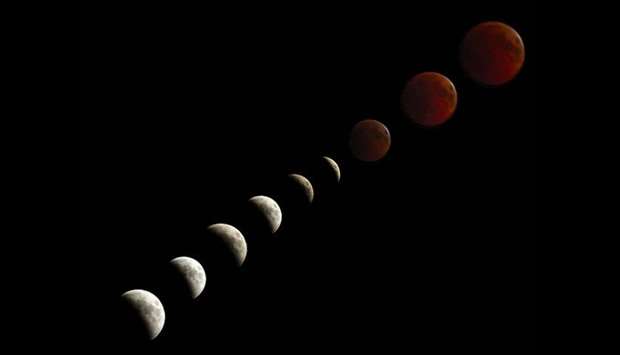A blood-red moon dazzled star gazers across much of the world Friday when the earth's natural satellite moved into the shadow of our planet for the longest lunar eclipse of the 21st Century.
From the Cape of Good Hope to the Middle East, and from the Kremlin to Sydney Harbour, thousands of people turned their eyes to the stars to watch the moon which turned dark before shining orange, brown and crimson as it moved into the earth's shadow.
The total eclipse lasted 1 hour, 42 minutes and 57 seconds, though a partial eclipse preceded and followed, meaning the moon spent a total of 3 hours and 54 minutes in the earth's umbral shadow, according to Nasa.
The fullest eclipse, at 2022 GMT, was visible from Europe, Russia, Africa, the Middle East, much of Asia and Australia though clouds blocked out the moon in some places.
Photographers charted the moon's rise across the world.
In Singapore, enthusiasts watched through telescopes at the Marina South Pier.
Hundreds of people in Australia paid to watch the eclipse from the Sydney Observatory before sunrise.
When the moon moved into the conical shadow of the earth, it went from being illuminated by the sun to being dark.
Some light, though, still reached it because it is bent by the earth's atmosphere.
"It's called a blood moon because the light from the sun goes through the earth's atmosphere on its way to the moon, and the earth's atmosphere turns it red in the same way that when the sun goes down it goes red," Andrew Fabian, professor of astronomy at the University of Cambridge, said.
At the same time, Mars was travelling closer to earth than it had done since 2003.
"It is a very unusual coincidence to have a total lunar eclipse and Mars at opposition on the same night," said Robert Massey, deputy executive director of the Royal Astronomical Society, who watched the eclipse from the Mediterranean Sea.
The next lunar eclipse of such a length is due in 2123.



